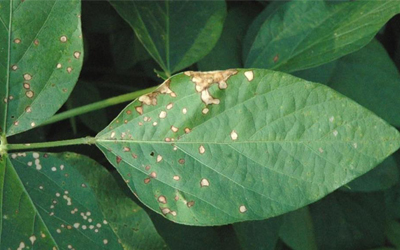What fungicide can cure the Soybean bacterial blight
Soybean bacterial blight is a devastating plant disease that affects soybean crops worldwide. The disease is caused by a bacterium called Pseudomonas syringae PV. Soybeans can cause severe yield loss if left untreated. Farmers and agricultural professionals have been searching for effective ways to combat the disease and save their soybean crops. In this article, we explore the chemical fungicides streptomycin, pyraclostrobin, and copper oxychloride and their potential to treat soybean bacterial blight.
Streptomycin is a multifunctional compound mainly used as an antibiotic drug in humans. However, it is also used as an agricultural pesticide. Streptomycin has broad-spectrum antimicrobial properties and is effective in controlling bacteria, fungi and algae. In the case of soybean bacterial blight, streptomycin has shown good results in controlling the bacteria that cause the disease. It can be applied as a foliar spray to effectively reduce the severity and spread of infection. Streptomycin can also control bacterial and fungal diseases of various other crops, as well as algae growth in ornamental ponds and aquariums.
Copper oxychloride is another chemical fungicide widely used in agriculture to control fungal and bacterial diseases in fruit and vegetable crops, including soybeans. It is especially effective against diseases such as blight, mold, and leaf spot. Copper oxychloride has been shown to be effective against Pseudomonas syringae pv. Soybean, the causative agent of bacterial blight of soybean. When applied as a spray, this fungicide forms a protective layer on plant surfaces, preventing the growth and spread of pathogens. Its ability to provide long-lasting protection makes it an excellent choice for the prevention and treatment of soybean bacterial blight.
Pyraclostrobin is a fungicide commonly used in agriculture and is widely used to control various plant diseases. The fungicide belongs to strobilurin chemicals and has excellent efficacy against fungal pathogens. Pyraclostrobin works by inhibiting the respiratory process of fungal cells, effectively preventing their growth and reproduction. While pyraclostrobin may not directly target the bacteria that causes soybean bacterial blight, it has been shown to have systemic effects that can indirectly reduce disease severity. Its ability to control other fungal diseases of soybean crops makes it a valuable tool in an integrated disease management approach.
When selecting chemical fungicides to treat soybean bacterial blight, factors such as effectiveness, safety, and environmental impact must be considered. Streptomycin, copper oxychloride, and pyraclostrobin are all viable options in the fight against this devastating disease. However, the choice of fungicides should be consulted with agricultural experts, according to the specific conditions and requirements of soybean crops. Additionally, it is critical to follow recommended application rates and safety precautions to minimize any potential risks associated with the use of these chemicals.
In conclusion, bacterial blight of soybean is a major concern for soybean growers and chemical fungicides can play a vital role in its management. Streptomycin, copper oxychloride, and pyraclostrobin are all chemicals that have the potential to be effective in controlling the disease. However, factors such as efficacy, safety, and environmental impact must be considered when selecting the most suitable fungicide for soybean bacterial blight control. By implementing integrated disease management strategies and using appropriate fungicides, farmers can protect soybean crops and ensure a healthy harvest.



